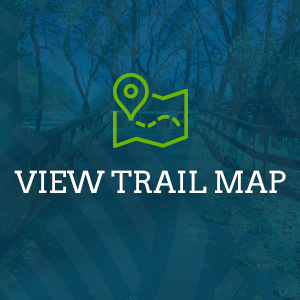Five Locks Access or Peter Yarnell Park to Jim Dietrich Park
Difficulty: Difficult. Travel time: 4 to 6 hours, plus shuttling of vehicles. Water Level at USGS gauge #01470500 (Berne): Min. 5.3 ft; Good 5.5 ft.
A favorite of our more-experienced paddlers, this Pre-Planned Itinerary is rated “Difficult” only because of its length. Each half of this trip would be considered “Moderate” because of the abundance of Class I and I+ rapids and riffles in those stretches.
The PFBC Five Locks Access was recently opened only 0.1 mile upriver of Peter Yarnell Park, so you have a choice of starting point for this trip (see “Five Locks Access” and “Peter Yarnell Park” “Water Trail Landings” list for more information on amenities). Whether you start from Five Locks or Yarnell, you will enjoy over twenty Class I and I+ rapids on the way to Leesport, as you negotiate the first half of the course of the “Schuylkill River Regatta.” This downriver canoe & kayak race was staged here by the local Keystone Canoe Club for over 40 years, drawing entrants from all over the country. You’ll paddle through a rich agricultural region of small, multi-generational family farms and orchards and pass by 5 towns in a 7-mile stretch, all with bridges connecting the countryside on both sides of the river. These closely-spaced villages had their origins as canal ports where local farmers could sell or barter their precious produce, grains, and livestock for coal and lumber from Schuylkill County and finished goods from Philadelphia and other industrialized cities downriver and beyond. From these tiny towns, Berks County agricultural products could travel as far away as Europe.
In the middle of this stretch is Perry Township River Access, a new, easy-on-easy-off canoe launch, an ideal rest stop.
There are still reminders of the canal days (some obvious, some obscure) in this section of the river. You may also notice the railroads, that superseded the canals, on both sides of the river. Back in their heyday, the fiercely-competitive Reading and Pennsylvania railroads built on opposite sides of the river, because they would not share their right-of-ways or tracks!
Upon arrival at Leesport Access (a good place to stop for lunch) you return to the 21st century. A strip of mini-marts, fast food, and “modern life” is only a half-mile from the landing!
As you leave Leesport, the second half of the Regatta course begins. But first, a few words of caution. Two old bridge piers remain at RM 88.2, about a half mile downriver. The RL pier tends to collect hazardous debris and, typically, the river is shallow around the RR pier. The best route through this feature is usually diagonally (right to left) in the left center of the main channel between the piers. (See a detailed “action map” of this feature by clicking/tapping on its hazard icon on the main map.)
As you move on, your surroundings are now becoming increasingly commercial and suburban on RL, but remain distinctly rural on the Bern Township (RR) side. Despite significant human encroachment, the Schuylkill here is still, surprisingly, a “Hidden River.” On RL at RM 86.8 is the mouth of the Maiden Creek, one of the larger tributaries of the Schuylkill River. This stream feeds Lake Ontelaunee (3 miles upstream), the drinking water supply for the City of Reading. The Maiden Creek has a noticeable influence on the depth, flow, and volume of the Schuylkill below this confluence. After a river-center run through the rapid below Cross Keys Bridge (RM 85.9), you’ll approach Peacock Bridge (RM 85.3), one of the Schuylkill’s more appealing landmarks, with its large, circular “eyes” and rugged stonework. And on RR is a 2-mile stretch of desilting basins that were once used to clean the river during the massive Schuylkill Project of the mid-20th century. At RM 83.8 are the abutments of the Stoudt’s Ferry Bridge, all that remain of this unique and historically-significant bridge. The RL abutment is now a deck for the house built on top and the one on RR is also incorporated into that homestead’s property. Completed in 1857, this bridge held the distinction of being the longest, single-span, wooden covered bridge in the world! But just as interesting, it was the centerpiece of the first “cloverleaf” in U.S. transportation history. This ingenious bridge and ramp design allowed mules to tow their canal boats from the towpath on one side of the river to the other without being disconnected.
To end your trip, you take out at the the Jim Dietrich Park access on RL (at RM 83.3). It has a wide dirt beach, a newly-improved ramp and carry up to an ample gravel parking lot at the top of the riverbank. The main grounds and facilities of this sprawling, modern park are a short walk up the wooded lane to the right.
(For more than these excerpts and website provide, see A Paddler’s Guide to the Schuylkill River Water Trail.)











